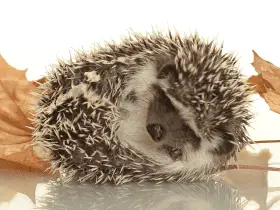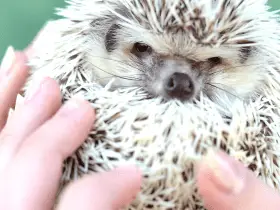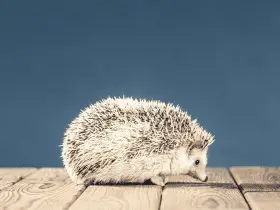Keeping our cages clean is like maintaining a well-oiled machine. We, as pet owners, know the importance of providing a healthy and hygienic environment for our furry friends.
In this article, we will explore the best practices for cage liner maintenance. From types of liners to proper cleaning techniques, frequency of replacement to selecting the right material – we’ve got you covered!
Get ready to learn valuable tips and tricks that will keep your cages fresh and odor-free. Let’s dive in together and create a haven for our beloved pets!
Key Takeaways
- There are reusable and disposable cage liners made from various materials, and the choice depends on personal preferences, budget, and commitment to sustainability.
- Proper cleaning techniques and supplies, such as disinfectant sprays and scrub brushes, are essential for maintaining a clean and odor-free cage.
- Regular cleaning and liner replacement are important for preventing bacterial growth, pests, and potential illnesses.
- Drying the cage liner thoroughly and disinfecting it using pet-safe products are necessary steps to eliminate germs and maintain a healthy environment.
Types of Cage Liners
When choosing cage liners, you’ll want to consider the different types available and their benefits. Two main options to consider are reusable and disposable cage liners.
Reusable cage liners are designed to be used multiple times before needing to be replaced. They are typically made from durable materials such as fabric or rubber, which can withstand regular washing and cleaning. These types of liners may require a bit more effort in terms of maintenance but can save you money in the long run.
On the other hand, disposable cage liners offer convenience and ease of use. Made from materials like paper or plastic, these liners are meant to be discarded after each use. They provide a quick solution for cage cleanliness without the need for laundering or sanitizing.
If you’re concerned about environmental impact, eco-friendly options are available for both reusable and disposable cage liners. For reusable liners, look for products made from sustainable materials like bamboo or hemp that have minimal impact on the environment during production and disposal.
For those opting for disposables, there are eco-friendly alternatives made from recycled paper or biodegradable materials that break down more easily in landfills.
Ultimately, the choice between reusable and disposable cage liners depends on your personal preferences, budget, and commitment to sustainability.
Proper Cleaning Techniques
When it comes to proper cleaning techniques for cage maintenance, there are a few key points to keep in mind.
First and foremost, having the essential cleaning supplies is crucial. This includes items such as disinfectant sprays, scrub brushes, and paper towels or microfiber cloths.
Additionally, understanding the frequency of cleaning is important to ensure a clean and healthy environment for your pets. Regularly cleaning the cage at least once a week can help prevent the buildup of bacteria and odors.
Finally, after cleaning, it is vital to thoroughly dry and disinfect the cage to eliminate any remaining germs or contaminants.
Essential Cleaning Supplies
To effectively maintain cage liners, it’s important to have all the essential cleaning supplies on hand. Having the right tools will make the task easier and more efficient.
First and foremost, you’ll need a good quality cage liner that is durable and easy to clean. Look for liners made from materials like fleece or absorbent fabrics that can be machine washed and dried.
Additionally, odor control is crucial in keeping your pet’s living space fresh. Invest in a pet-safe disinfectant spray or wipes specifically designed for small animal enclosures. These products will help eliminate bacteria and reduce unpleasant smells.
A small handheld vacuum can also come in handy for quick spot cleaning of loose bedding or food debris.
Lastly, don’t forget about gloves and a dedicated brush or scrubber for those tougher stains.
With these cleaning supplies at hand, maintaining your cage liners will be a breeze!
Frequency of Cleaning
It’s important to establish a regular cleaning routine for your pet’s living space. Regular cage liner cleaning offers several benefits for both your pet and their overall health.
Firstly, it helps maintain a clean and odor-free environment, reducing the risk of bacterial growth and potential illnesses. By removing waste promptly, you prevent the build-up of harmful bacteria that can lead to infections or diseases.
Moreover, keeping the cage liner clean ensures your pet has a comfortable and hygienic living space. On the other hand, infrequent cage liner cleaning can have a negative impact on your pet’s health. Accumulated waste can attract pests like flies or rodents, increasing the risk of parasitic infestations or contamination from their droppings.
Additionally, an unclean living environment may stress out your pet, leading to behavioral issues or respiratory problems. Therefore, establishing a regular cleaning routine is crucial for ensuring the well-being and happiness of your furry friend.
Drying and Disinfecting
Drying and disinfecting your pet’s living space regularly is essential for maintaining a healthy and hygienic environment. After cleaning the cage liner, it is important to ensure that it is completely dry before placing it back in your pet’s habitat.
There are several drying techniques you can use, such as air drying or using a towel to absorb excess moisture. It is crucial to avoid leaving any dampness behind, as this can lead to the growth of harmful bacteria or fungi.
Once the liner is dry, you can proceed with disinfecting it. There are various disinfectant options available, including bleach solutions or pet-safe disinfectants specifically designed for small animal habitats. Make sure to follow the instructions on the product label and thoroughly rinse off any residual disinfectant before returning the liner to your pet’s cage.
Frequency of Liner Replacement
When you’re maintaining cage liners, you’ll want to consider how often they should be replaced. Liner durability is an important factor to consider when deciding on a replacement schedule. A durable liner can withstand frequent cleanings and will last longer, making it a cost-effective option in the long run.
The frequency of liner replacement depends on several factors, such as the type of animal housed in the cage and the level of soiling or odor present. For example, if you have small animals like hamsters or guinea pigs that produce minimal waste, you may only need to replace the liner once every week or two. However, if you have larger animals like dogs or cats that produce more waste or have strong odors, replacing the liner more frequently may be necessary.
To determine when it’s time to replace your cage liner, regularly check for signs of wear and tear. If the liner is torn or frayed, it may not provide adequate protection for your flooring or bedding material underneath. Additionally, if there are persistent odors even after cleaning, this could indicate that the liner needs to be replaced.
Selecting the Right Liner Material
When it comes to selecting the right liner material for our cages, we need to consider the pros and cons of each option. Different materials offer different benefits, such as durability, ease of cleaning, and odor control.
Additionally, choosing the appropriate lifespan for a liner is crucial in maintaining a clean and hygienic living environment for our animals.
Material Pros and Cons
To keep your cage clean, you’ll need to consider the pros and cons of different liner materials. Here are some factors to consider when choosing a liner:
Liner Durability
Plastic liners: These are durable and easy to clean, making them a popular choice among pet owners.
Paper liners: While more affordable, they may not be as durable and can tear easily with active pets.
Fabric liners: These can be washed and reused multiple times, but they may not withstand heavy chewing or scratching.
Cost Comparison
Plastic liners tend to be more expensive initially, but their durability makes them cost-effective in the long run.
Paper liners are generally more affordable upfront but may need frequent replacement, increasing long-term costs.
Fabric liners can have higher upfront costs due to the initial investment but can save money over time as they can be washed and reused.
Considering these factors will help you find a liner material that suits your needs while ensuring a clean and comfortable environment for your furry friend.
Choosing Liner Lifespan
If you want a liner that will last a long time, consider the lifespan of different materials.
When it comes to liner durability, choosing the right thickness is crucial. The thickness of a liner determines its ability to withstand wear and tear over time. Thicker liners tend to be more durable and are less likely to rip or puncture.
However, it’s important to strike a balance between durability and cost-effectiveness. A liner that is too thick may be unnecessarily expensive, while one that is too thin might not last as long. It’s recommended to choose a liner with a thickness that suits your specific needs and budget.
Conducting proper research on different liner materials and their respective lifespan can help you make an informed decision and ensure that your cage remains clean and hygienic for an extended period of time.
Tips for Odor Control
One way to keep odors under control is by regularly changing the cage liner. This simple task can go a long way in maintaining a fresh and odor-free environment for our furry friends.
In addition to regular changes, there are several natural cleaning remedies that can help eliminate unpleasant smells:
Baking soda: Sprinkling baking soda on the cage liner before placing it in the cage can help absorb odors. Its natural deodorizing properties make it an effective and safe option.
White vinegar: Mixing equal parts of water and white vinegar creates a powerful odor-neutralizing solution. Spray this mixture onto the cage liner and let it sit for a few minutes before rinsing it off.
Lemon juice: The citric acid in lemon juice acts as a natural disinfectant and odor eliminator. Dilute lemon juice with water and use it to wipe down the cage liner, leaving behind a fresh scent.
By incorporating these natural cleaning remedies into our routine, we can effectively combat unwanted odors while ensuring the well-being of our pets.
Preventing Bacterial Growth
Regularly changing the liner in your pet’s cage helps prevent the growth of bacteria and maintain a healthy environment. Bacterial growth prevention is essential for maintaining hygiene standards and ensuring the well-being of your furry friend.
When left unattended, bacteria can multiply rapidly on soiled liners, leading to unpleasant odors, potential health risks, and an unsanitary living space.
To effectively prevent bacterial growth, it is crucial to establish a regular cleaning routine. Start by removing any solid waste from the cage daily and disposing of it properly. Then, at least once a week (or more frequently if necessary), replace the entire liner with a fresh one. This will help remove any accumulated bacteria or dirt that may have built up over time.
Choosing the right cage liner is also important in preventing bacterial growth. Opt for liners made of materials that are easy to clean and disinfect, such as washable fabric or disposable liners specifically designed for pet cages. Avoid using materials that can absorb moisture or retain odor-causing substances.
Furthermore, proper hygiene practices extend beyond just changing the liner. Regularly clean and disinfect all surfaces inside the cage using pet-safe cleaning products to eliminate any lingering bacteria.
Common Mistakes to Avoid
To prevent bacterial growth and maintain a healthy environment for your pet, it’s important to avoid certain common mistakes. Here are some tips for effective cleaning:
Neglecting regular cleaning: One common mistake is not cleaning the cage liner regularly. Bacteria can quickly multiply on dirty surfaces, leading to potential health issues for your pet.
Using improper cleaning products: Another mistake to avoid is using harsh or toxic chemicals when cleaning the cage liner. These can be harmful to both you and your pet. Instead, opt for pet-safe disinfectants or natural alternatives like vinegar and water.
Inadequate drying: After cleaning the cage liner, make sure it is thoroughly dried before placing it back in the cage. Moisture creates an ideal breeding ground for bacteria, so proper drying is crucial.
By avoiding these common mistakes and following these tips, you can ensure a clean and healthy living space for your beloved pet.
Regularly clean the cage liner with appropriate products, allow it to dry completely, and maintain a consistent cleaning schedule. Your furry friend will thank you!
Frequently Asked Questions
Can I Use Any Type of Liner for My Pet’s Cage?
We can use different types of liners for our pet’s cage. Reusable options are eco-friendly and cost-effective, while disposable liners offer convenience. Both have pros and cons, so it’s important to choose the one that suits our needs and preferences.
How Often Should I Clean My Pet’s Cage Liner?
We clean our pet’s cage liner regularly to maintain hygiene. The frequency depends on the type of pet we have. Using natural or eco-friendly liners not only benefits our pets but also promotes a cleaner environment.
What Are the Signs That Indicate It’s Time to Replace the Cage Liner?
When it’s time to replace the cage liner, signs of wear and tear become apparent. We’ll notice fraying edges, holes, or discoloration. Additionally, odor buildup indicates that the liner is no longer effectively absorbing and controlling pet waste.
Are There Any Specific Materials That Are Better for Certain Pets?
When it comes to cage liners, certain pets thrive with specific materials. We’ll explore the pros and cons of different options, providing you with helpful insights on pet-friendly materials for your furry friend’s comfort and cleanliness.
Do Cage Liners Help With Controlling Pet Allergies?
Cage liners play a crucial role in preventing cross contamination and maintaining pet health. By trapping allergens and waste, they help control pet allergies. Their benefits include easy cleaning, odor control, and reducing the risk of infections.
Conclusion
In conclusion, maintaining clean cage liners is crucial for the overall health and well-being of our furry friends. By following proper cleaning techniques and selecting the right liner material, we can ensure a safe and comfortable environment for our pets.
Remember to replace liners regularly to prevent bacterial growth and control odors. Just like changing the sheets on our beds, keeping cage liners fresh is like giving our pets a cozy, clean home.
So let’s stay proactive in keeping their habitats tidy and enjoyable!




















Leave a Reply
View Comments